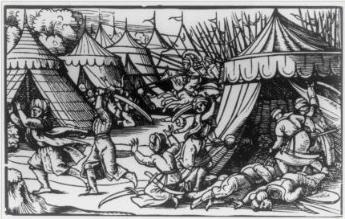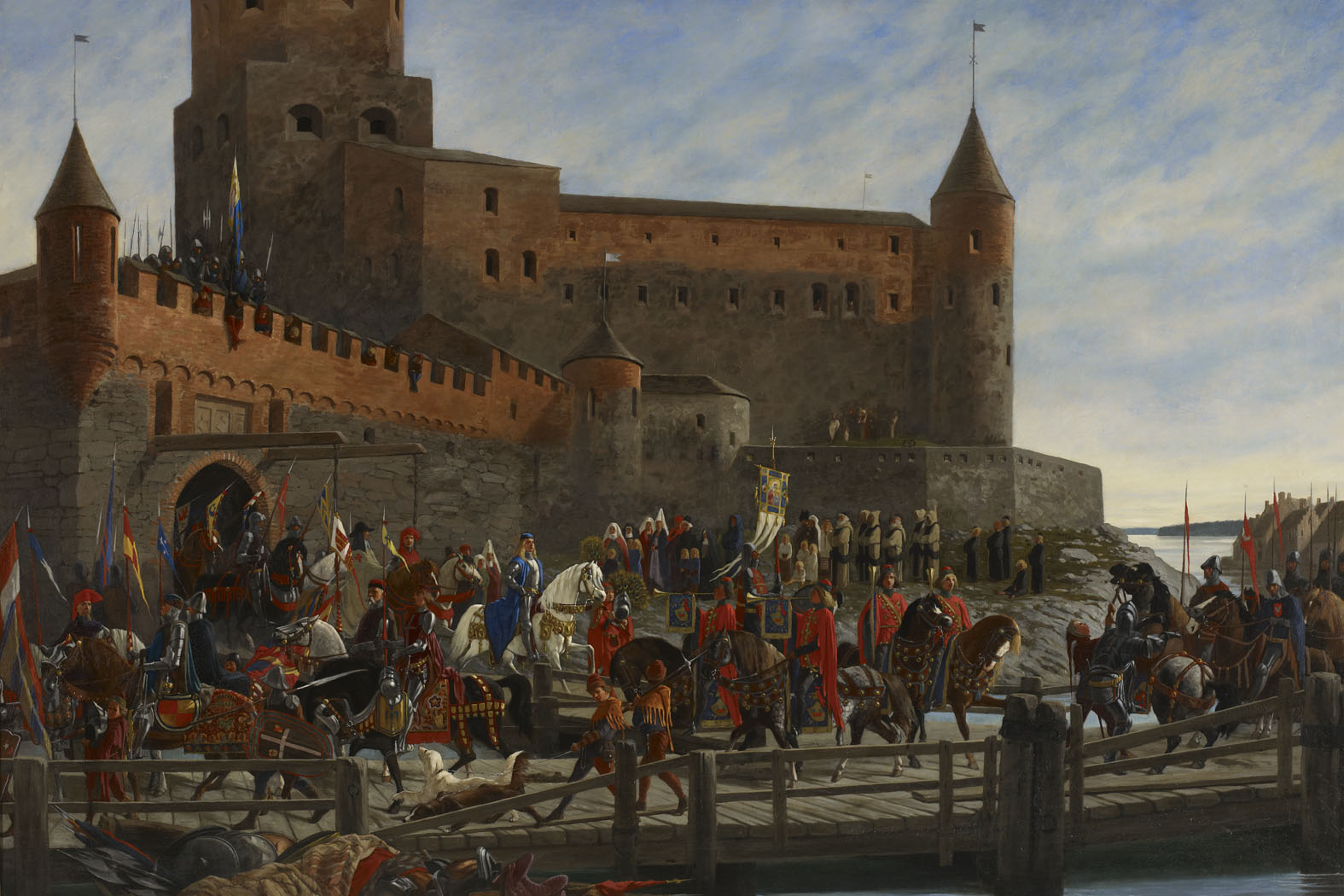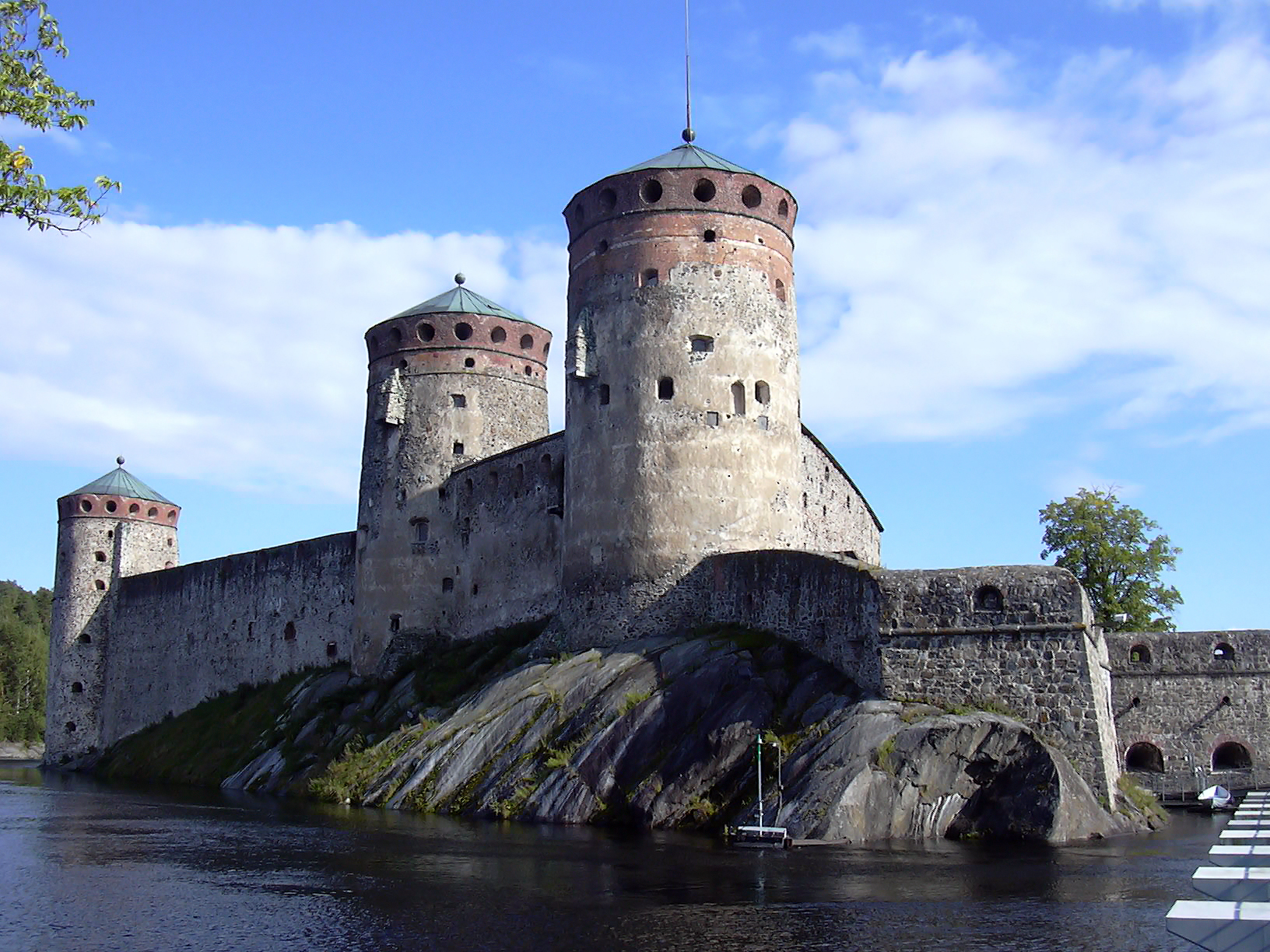|
1457
Year 1457 ( MCDLVII) was a common year starting on Saturday (link will display the full calendar) of the Julian calendar. Events January–December * February 11 – After years of captivity and absence from the Ming throne, the Zhengtong Emperor of China is reinstated, as the Tianshun Emperor. * February 24 – Charles VIII of Sweden is declared deposed. The Archbishop of Sweden, Jöns Bengtsson Oxenstierna, and statesman Erik Axelsson Tott become co-regents of Sweden. The throne is then offered to Christian I of Denmark and Norway. * March 6 – King James II of Scotland decrees that ". . . . . ", the first historical mention of the game of golf. * April 12 – Ştefan cel Mare secures the throne of Moldavia, which he retains for the next 47 years. * June 23 – Christian I is elected king of Sweden, ending the war between Sweden and Denmark and restoring the Kalmar Union. *June 29 – The Dutch city of Dordrecht is devastated by fire. * A ... [...More Info...] [...Related Items...] OR: [Wikipedia] [Google] [Baidu] |
Ştefan Cel Mare
Stephen III of Moldavia, most commonly known as Stephen the Great ( ro, Ștefan cel Mare; ; died on 2 July 1504), was Voivode (or Prince) of Moldavia from 1457 to 1504. He was the son of and co-ruler with Bogdan II, who was murdered in 1451 in a conspiracy organized by his brother and Stephen's uncle Peter III Aaron, who took the throne. Stephen fled to Hungary, and later to Wallachia; with the support of Vlad III Țepeș, Voivode of Wallachia, he returned to Moldavia, forcing Aaron to seek refuge in Poland in the summer of 1457. Teoctist I, Metropolitan of Moldavia, anointed Stephen prince. He attacked Poland and prevented Casimir IV Jagiellon, King of Poland, from supporting Peter Aaron, but eventually acknowledged Casimir's suzerainty in 1459. Stephen decided to recapture Chilia (now Kiliia in Ukraine), an important port on the Danube, which brought him into conflict with Hungary and Wallachia. He besieged the town during the Ottoman invasion of Wallachia in 1462, but ... [...More Info...] [...Related Items...] OR: [Wikipedia] [Google] [Baidu] |
Battle Of Ujëbardha
The Battle of Albulena, also known as the Battle of Ujëbardha, was fought on 2 September 1457 between Albanian forces led by Skanderbeg and an Ottoman army under Isak bey Evrenoz and Skanderbeg's nephew, Hamza Kastrioti. Skanderbeg had been the leader of the Albanians for over a decade and had seen many victories over Ottoman arms. However, after his loss at Berat in 1455 at the hands of Isak bey, Skanderbeg was betrayed by some of his most trusted officers, among them Moisi Arianit Golemi. Golemi returned the next year with an Ottoman force under his command, but was defeated at the Battle of Oranik and rejoined Skanderbeg's army. Later, the dissatisfied Hamza Kastrioti betrayed Skanderbeg and was offered joint-command with Isak bey over a second Ottoman invasion force. The Ottomans arrived in late May 1457 and marched through the Mat River Valley. Skanderbeg tried to delay the vanguard, composed of Akıncı cavalrymen, but upon the approach of the main force, decided ... [...More Info...] [...Related Items...] OR: [Wikipedia] [Google] [Baidu] |
Christian I Of Denmark
Christian I (February 1426 – 21 May 1481) was a Scandinavian monarch under the Kalmar Union. He was king of Denmark (1448–1481), Norway (1450–1481) and Sweden (1457–1464). From 1460 to 1481, he was also duke of Schleswig (within Denmark) and count (after 1474, duke) of Holstein (within the Holy Roman Empire). He was the first king of the House of Oldenburg. In the power vacuum that arose following the death of King Christopher of Bavaria (1416–1448) without a direct heir, Sweden elected Charles VIII of Sweden (14081470) king with the intent to reestablish the union under a Swedish king. Charles was elected king of Norway in the following year. However the counts of Holstein made the Danish Privy Council appoint Christian as king of Denmark. His subsequent accessions to the thrones of Norway (in 1450) and Sweden (in 1457), restored the unity of the Kalmar Union for a short period. In 1463, Sweden broke away from the union and Christian's attempt at a reconquest resu ... [...More Info...] [...Related Items...] OR: [Wikipedia] [Google] [Baidu] |
Mainz Psalter
The ''Mainz Psalter'' was the second major book printed with movable type in the West; the first was the Gutenberg Bible. It is a psalter commissioned by the Mainz archbishop in 1457. The Psalter introduced several innovations: it was the first book to feature a printed date of publication, a printed colophon, two sizes of type, printed decorative initials, and the first to be printed in three colours. The colophon also contains the first example of a printer's mark. It was the first important publication issued by Johann Fust and Peter Schoeffer following their split from Johannes Gutenberg. Description The Psalter combines printed text with two-colour woodcuts: since both woodcuts and movable print are relief processes, they could be printed together on the same press. The Psalter is printed using black and red inks, with the smaller initials in red. The larger coloured capitals are done by hand in blue and red inks. Some initials combine printing and hand-drawing, and ... [...More Info...] [...Related Items...] OR: [Wikipedia] [Google] [Baidu] |
Zhengtong Emperor
Emperor Yingzong of Ming (; 29 November 1427 – 23 February 1464), personal name Zhu Qizhen (), was the sixth and eighth Emperor of the Ming dynasty. He ascended the throne as the Zhengtong Emperor () in 1435, but was forced to abdicate in 1449, in favour of his younger brother the Jingtai Emperor, after being captured by the Northern Yuan dynasty during the Tumu Crisis. In 1457, he deposed the Jingtai Emperor and ruled again as the Tianshun Emperor () until his death in 1464. First reign Zhu Qizhen was the son of the Xuande Emperor and his second wife Empress Sun. At the beginning of the Zhengtong reign, the Ming dynasty was prosperous and at the height of its power as a result of the Xuande Emperor's able administration. The Zhengtong Emperor's accession at the age of eight made him the first child emperor of the dynasty – hence the Zhengtong Emperor was easily influenced by others, especially the eunuch Wang Zhen. At first, Wang Zhen was kept under control by his ... [...More Info...] [...Related Items...] OR: [Wikipedia] [Google] [Baidu] |
Emperor Yingzong Of Ming
Emperor Yingzong of Ming (; 29 November 1427 – 23 February 1464), personal name Zhu Qizhen (), was the sixth and eighth Emperor of the Ming dynasty. He ascended the throne as the Zhengtong Emperor () in 1435, but was forced to abdicate in 1449, in favour of his younger brother the Jingtai Emperor, after being captured by the Northern Yuan dynasty during the Tumu Crisis. In 1457, he deposed the Jingtai Emperor and ruled again as the Tianshun Emperor () until his death in 1464. First reign Zhu Qizhen was the son of the Xuande Emperor and his second wife Empress Sun. At the beginning of the Zhengtong reign, the Ming dynasty was prosperous and at the height of its power as a result of the Xuande Emperor's able administration. The Zhengtong Emperor's accession at the age of eight made him the first child emperor of the dynasty – hence the Zhengtong Emperor was easily influenced by others, especially the eunuch Wang Zhen. At first, Wang Zhen was kept under control by his fa ... [...More Info...] [...Related Items...] OR: [Wikipedia] [Google] [Baidu] |
Skanderbeg
, reign = 28 November 1443 – 17 January 1468 , predecessor = Gjon Kastrioti , successor = Gjon Kastrioti II , spouse = Donika Arianiti , issue = Gjon Kastrioti II , royal house = Kastrioti , father = Gjon Kastrioti , mother = Voisava Kastrioti , birth_name = Gjergj ( see Name) , birth_date = 1405 , birth_place = Principality of Kastrioti , death_date = 17 January 1468 (aged 62) , death_place = Alessio, Republic of Venice , place of burial = Church of Saint Nicholas, Lezhë , religion = Islam Catholicism , occupation = Lord of the Principality of Kastrioti, , signature = Dorëshkrimi i Skënderbeut.svg Gjergj Kastrioti ( la, Georgius Castriota; it, Giorgio Castriota; 1405 – 17 January 1468), commonly known as Skanderbeg ( sq, Skënderbeu or ''Skënderbej'', from ota, اسکندر بگ, İskender Bey; it, Scanderbeg), was an Albanian feudal lord and military commander who led a reb ... [...More Info...] [...Related Items...] OR: [Wikipedia] [Google] [Baidu] |
Charles VIII Of Sweden
Charles VIII ( sv, Karl; 1408–1470), contemporaneously known as Charles II and called Charles I in Norwegian context, was king of Sweden (1448–1457, 1464–1465 and 1467–1470) and king of Norway (1449–1450). Regnal name Charles was the second Swedish king by the name of Charles (Karl). ''Charles VIII'' is a posthumous invention, counting backwards from Charles IX (r. 1604–1611) who adopted his numeral according to a fictitious history of Sweden. Six others before Charles VII are unknown to any sources before Johannes Magnus's 16th century book ', and are considered his invention. Charles was the first Swedish monarch of the name to actually use a regnal number as ''Charles II'' (later retrospectively renumbered VIII), on his wife's tombstone (1451) at Vadstena. Early life Karl Knutsson was born in October 1408 or 1409, at Ekholmen Castle, the son of Knut Tordsson (Bonde), knight and member of the privy council (''riksråd''), and Margareta Karlsdotter (Sparre av ... [...More Info...] [...Related Items...] OR: [Wikipedia] [Google] [Baidu] |
Erik Axelsson Tott
Erik Axelsson (Tott) (c. 1419–1481) was a Dano-Swedish statesman and regent of Sweden under the Kalmar Union, jointly with Jöns Bengtsson Oxenstierna in 1457 and alone from 1466 to 1467. Biography He was born in Scania during the reign of King Eric of Pomerania, as the son of Axel Pedersen Thott, lord of Herlev and Lilloe, and his second wife Ingeborg Ivarsdotter. Entered the service of his mother's first cousin, King Charles VIII of Sweden (c. 1408–1470), at an early age when Charles was Lord High Constable and Castellan. Erik Axelsson was the "Swedish anchor" of his family, of whom most regarded themselves as Danish subjects. His father's first wife was from Scania, a region then integral to the (Danish) kingdom. In two generations during the latter half of the 15th century, the nine Tott brothers (''Axelssöner''), held high and mighty positions just when Denmark and Sweden were struggling to shape the Kalmar Union, however trying to preserve their own family's posit ... [...More Info...] [...Related Items...] OR: [Wikipedia] [Google] [Baidu] |
Jöns Bengtsson Oxenstierna
Jöns Bengtsson (Oxenstierna), in Latin known as Johannes Benedicti de Salista, (1417 – 15 December 1467) was a Swedish clergyman, canon law scholar and statesman, Archbishop of Uppsala (1448–1467). He was Regent of Sweden, under the Kalmar Union, in 1457, shared with Erik Axelsson (Tott), and alone 1465–1466. Biography Family Jöns Bengtsson was a member of the illustrious Oxenstierna family, various representatives of which had already become prominent in the public life of Sweden. His father was Privy Councillor Bengt Jönsson Oxenstierna, Lord of Salsta, and his mother was Kristina Kristiernsdotter Vasa, daughter of Lord High Justiciar Kristiern Nilsson Vasa. Education and academic career He studied at the University of Leipzig and returned in 1438 to Sweden with a ''magister in artibus'' degree. On his return he was made Archpriest of the chapter of Uppsala Cathedral. Shortly afterwards his father was made Lawspeaker of the province of Uppland and Cast ... [...More Info...] [...Related Items...] OR: [Wikipedia] [Google] [Baidu] |
Kalmar Union
The Kalmar Union ( Danish, Norwegian, and sv, Kalmarunionen; fi, Kalmarin unioni; la, Unio Calmariensis) was a personal union in Scandinavia, agreed at Kalmar in Sweden, that from 1397 to 1523 joined under a single monarch the three kingdoms of Denmark, Sweden (then including most of present-day Finland), and Norway, together with Norway's overseas colonies Norway retained none of its prior possessions, however. Christian I pledged the Northern Isles to Scotland as insurance for his daughter’s dowery in 1468; when the dowery wasn’t paid the islands transferred to perpetual Scottish sovereignty in 1470. Following the Union’s dissolution, all remaining overseas possessions brought into the Union by Norway became property of the Danish monarch; who retained ownership following the transfer of the Kingdom of Norway from the Danish crown to Swedish crown (discussed in further detail below) after the Napoleonic Wars. (then including Iceland, Greenland, Nominal possession. ... [...More Info...] [...Related Items...] OR: [Wikipedia] [Google] [Baidu] |
Ming Dynasty
The Ming dynasty (), officially the Great Ming, was an Dynasties in Chinese history, imperial dynasty of China, ruling from 1368 to 1644 following the collapse of the Mongol Empire, Mongol-led Yuan dynasty. The Ming dynasty was the last orthodox dynasty of China ruled by the Han Chinese, Han people, the majority ethnic group in China. Although the primary capital of Beijing fell in 1644 to a rebellion led by Li Zicheng (who established the short-lived Shun dynasty), numerous rump state, rump regimes ruled by remnants of the House of Zhu, Ming imperial family—collectively called the Southern Ming—survived until 1662. The Ming dynasty's founder, the Hongwu Emperor (r. 1368–1398), attempted to create a society of self-sufficient rural communities ordered in a rigid, immobile system that would guarantee and support a permanent class of soldiers for his dynasty: the empire's standing army exceeded one million troops and the naval history of China, navy's dockyards in Nanjin ... [...More Info...] [...Related Items...] OR: [Wikipedia] [Google] [Baidu] |







